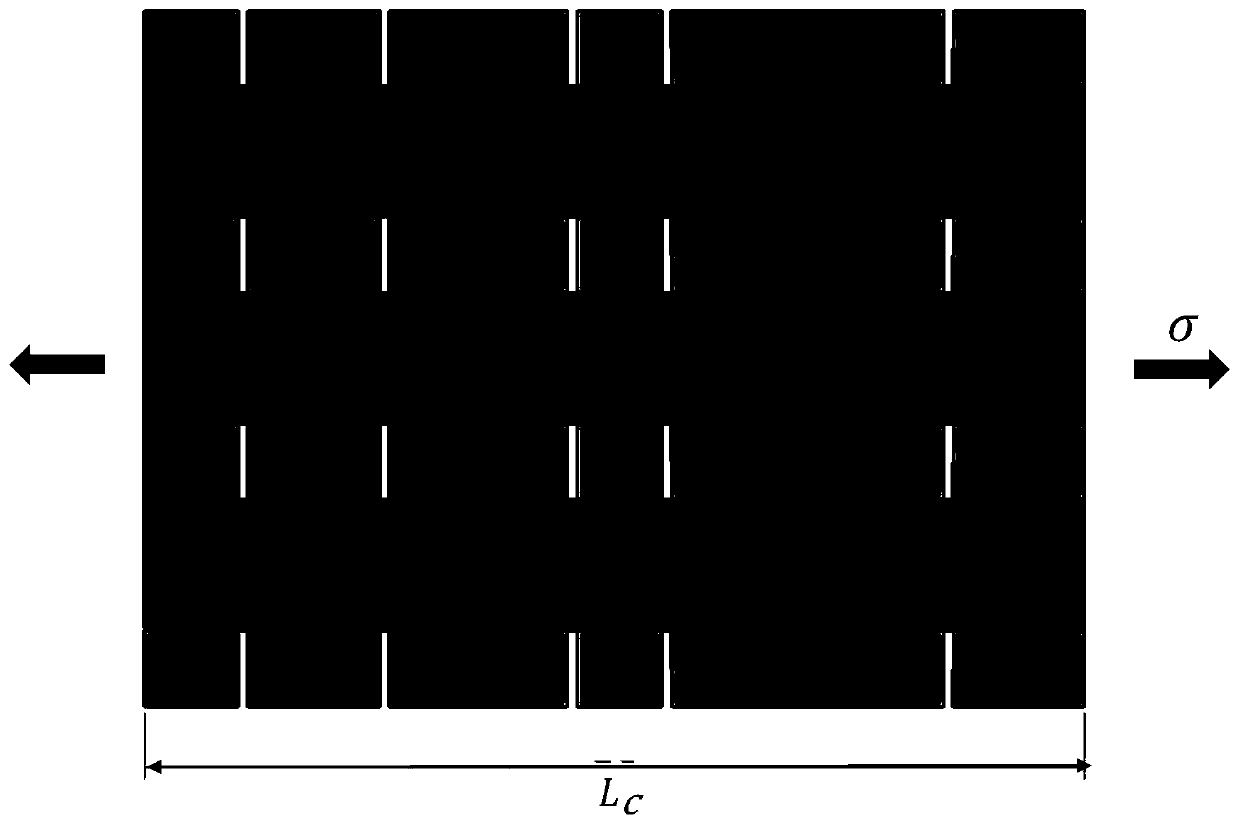Method for predicting arbitrary loading and unloading stress-strain curve of ceramic-based composite material in high-temperature oxidation environment
A stress-strain curve and composite material technology, which is used in the field of stress-strain curve prediction of arbitrary loading and unloading of ceramic matrix composites in high temperature oxidation environment
- Summary
- Abstract
- Description
- Claims
- Application Information
AI Technical Summary
Problems solved by technology
Method used
Image
Examples
Embodiment Construction
[0074] Below in conjunction with embodiment the present invention will be further described.
[0075] Some parameters in this embodiment are shown in Table 1
[0076] Table 1
[0077]
[0078] A method for predicting the stress-strain curve of a ceramic matrix composite material in a high-temperature oxidation environment under random loading and unloading, comprising the following steps:
[0079] Step 1: Determine the crack density and crack spacing of the unidirectional SiC / SiC ceramic matrix composite matrix based on the Monte Carlo simulation method for cracking the matrix of the unidirectional SiC / SiC ceramic matrix composite;
[0080] The concrete steps of described step one are:
[0081] Based on the Monte Carlo method to simulate the matrix crack of the unidirectional SiC / SiC composite material, the loading process is as follows Figure 9 As shown, to determine the crack spacing of the matrix at the time of initial loading, the failure probability of the matrix i...
PUM
 Login to View More
Login to View More Abstract
Description
Claims
Application Information
 Login to View More
Login to View More - R&D
- Intellectual Property
- Life Sciences
- Materials
- Tech Scout
- Unparalleled Data Quality
- Higher Quality Content
- 60% Fewer Hallucinations
Browse by: Latest US Patents, China's latest patents, Technical Efficacy Thesaurus, Application Domain, Technology Topic, Popular Technical Reports.
© 2025 PatSnap. All rights reserved.Legal|Privacy policy|Modern Slavery Act Transparency Statement|Sitemap|About US| Contact US: help@patsnap.com



